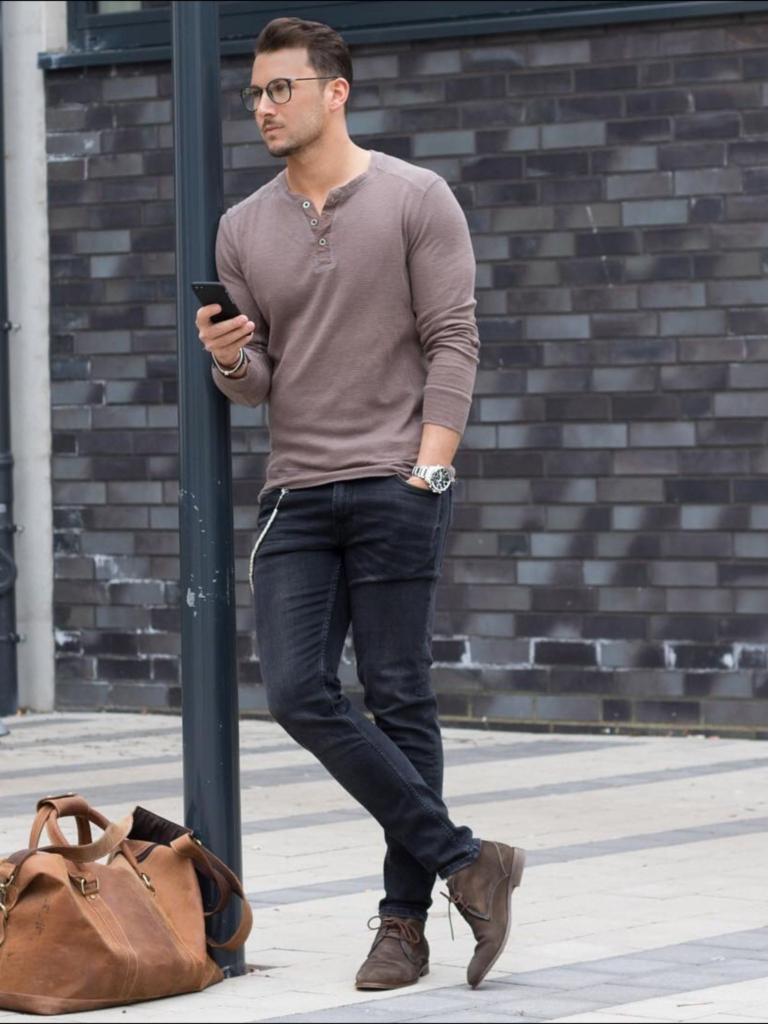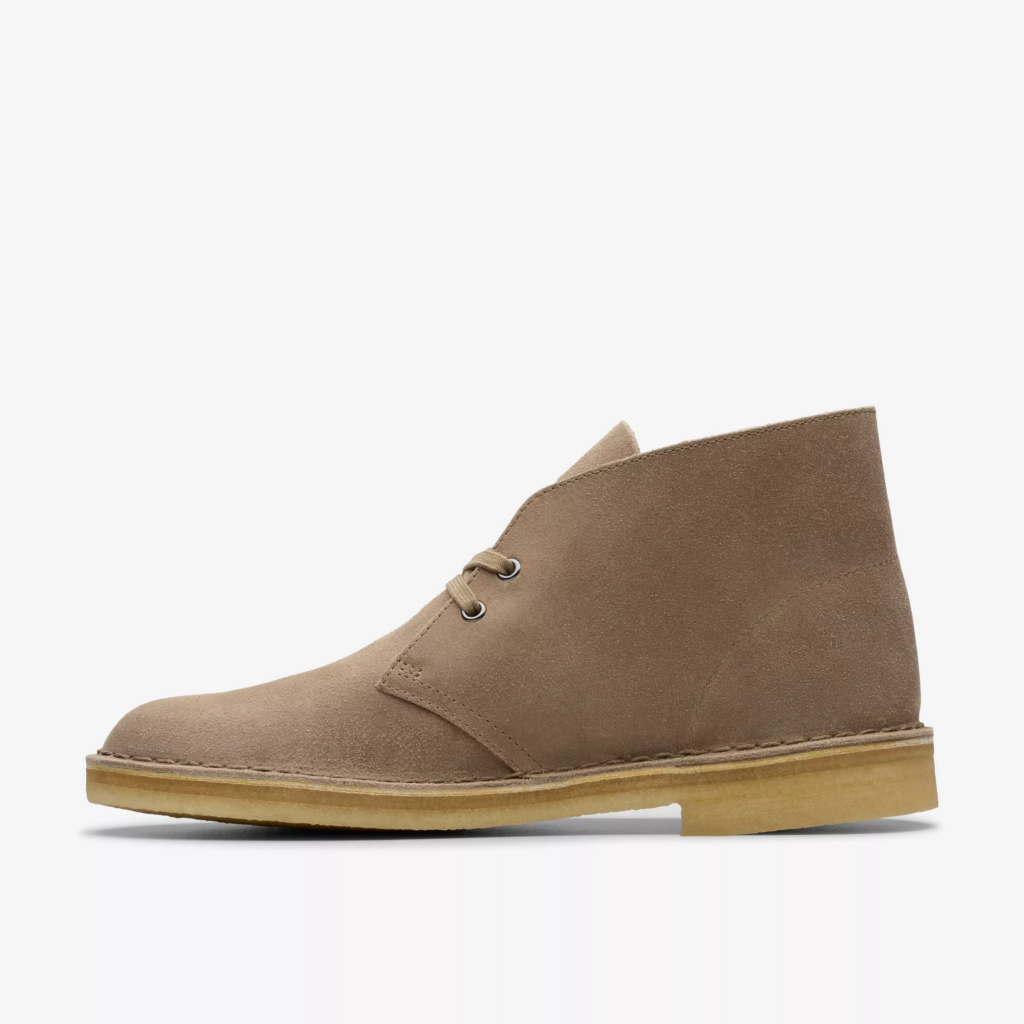The History And My Background With Chukka Boots
A decade ago I worked in San Francisco’s 1355 Market St. Building. To this day, its most famous tenant continues to be Twitter/X. Now, I didn’t work at Twitter. I worked at another tech office two floors below.
As I remember it, nearly the entire building consisted of modern tech-related offices. This meant that the vibes and ambiance of the people staffing these offices were similar amongst the companies occupying the building. For the most part, this also meant that the demographics of their workforces were quite similar, too.
The men in the office wore the modern professional office casual “uniform” consisting of form-fitting shirts (usually with buttons and never T-shirts) and slacks or denim.

Many of the actual coders wore their trademark coders’ garb of hoodies and T-shirts. However, for anything dressier, white collar button shirts and ties were considered too formal and stuffy—more so on the West Coast. That’s the world of tech.
The same casual outlook applied to footwear. So, when it came to dressy men’s shoes, anything that made you think of a law firm like Oxfords and Penny Loafers were out. Even double-monk strap shoes could have been too risky unless you were a sales guy who dressed the right way and had the chops to pull them off.
I’d wager the sales guys could probably get away wearing brogues, too.
So what did men in these environments looking for dressy footwear, that wasn’t too formal, gravitate to?
The chukka boot.
Modern Versatility, Humble Origins
The chukka boot has some interesting lines, and even those (like me) who aren’t versed in formal attire can immediately look at them and realize they’re anything but stuffy. Typically fashioned out of tan, brown, or earth-colored suede uppers, chukka boots mesh well with hues and tones found in denim, slacks, and the shirts worn by young and modern office workers.
To this day, chukka boots continue to be a mainstay in the wardrobe of legions of the younger urban professional crowd. And they wouldn’t look out of place in any major city anywhere in the world either.
I’m a lifelong blue-collar man who’d only ever worried about steel-toed work boots, sneakers, or technical outdoor footwear to wear to the range. So, I would have never “discovered” the chukka boot were it not for working in the tech offices of San Francisco. And because of this, I mentally associated the chukka boot with the urban tech crowd.
Imagine my surprise when I accidentally discovered that chukka boots were called desert boots and had a more ruggedly humble heritage that had nothing to do with modern, well-heeled, professional, and dressy attire.
Before these ankle-height boots became trendy, their forerunners hailing from Africa had a more down-to-earth origin (quite literally). Proto-chukkas were what South African farmers and fighting men from the region used to wear.
A Brief History Of Chukkas And Desert Boots
The Second World War era was perhaps one of Great Britain’s last official affairs as a true global empire, and British forces were spread across the globe. They fought the Axis powers in places beyond continental Europe, including the North Atlantic, North Africa, the Middle East, the Mediterranean, South East Asia, and several Pacific islands.
One Nathan Clark, a British Army officer and member of the British Clark family of footwear fame, took note of a particular style of light boot that British soldiers came to adore and take with them on campaign. These “desert boots” as they were called, were crafted cobblers in Cairo’s famous and ancient Khan El-Khalili bazaar.
Cairo Desert Boots
It turned out that many a Commonwealth soldier, tired of trudging around in his British Army issued boots, came to replace those with these Cairo desert boots instead. These lightweight boots were built around a crepe (rubber) sole and a lightweight suede upper. The rubber soles and lighter construction were easier on the feet, especially in hot desert climes.
If there’s anything more important than the soldier’s rifle, it’s his own feet. The original design for those Cairo desert boots hailed from South Africa, from similar footwear called veldskoen. These, in turn, were derived from a form of moccasins indigenous tribesmen (Khoi-San) would wear in order to protect their soles from the harsh southern African terrain.
The Dutch settlers took the tribal veldskoen moccasin concept and further developed it into a work boot for field use. It’s not hard to see how vellies (as they’re still called in South Africa) ended up not only on the feet of fighting men participating in bush wars throughout Africa but also in Cairo’s bazaars over time.
The forces of the empire cross-pollinated these boots amongst Commonwealth forces only to return back to England. After the war, taking what he’d seen on the feet of British servicemen, Nathan Clark and his family business developed a design that would eventually be unveiled to the world as the original Clarks Desert Boot in 1949.
Chukka?
The term chukka, which is synonymous with these types of desert boots, ostensibly comes from a reference to the sport of polo. Starting from the 1950s through the present time, the Clarks Chukka/Desert Boot has become an archetype of fashionable footwear—as I mentioned, encountering them during my time working in San Francisco tech offices.


Tying It All Into5.11’s own stylized Chukka Boots
Thank you for reading through the first part of this article. Not only is this the first fashion-related piece I’ve ever written, but I also wrote this review backward by first delving into the history of the chukka boot and mentioning my relationship to it.
I’ve been walking around in a pair of the 5.11 Chukkas since September, and they’re great. That’s what Part 2 will be all about: the 5.11 chukka boots themselves.
But I’d be lying if I didn’t admit that part of this shoe’s appeal is its rugged background as a fighting man’s shoe during the Second World War from the deserts of Africa and beyond. A wide variety of men’s fashion has origins in military uniforms, and this applies to chukka boots in a roundabout way, too.

Continued soon, in Part 2…
Read the full article here








